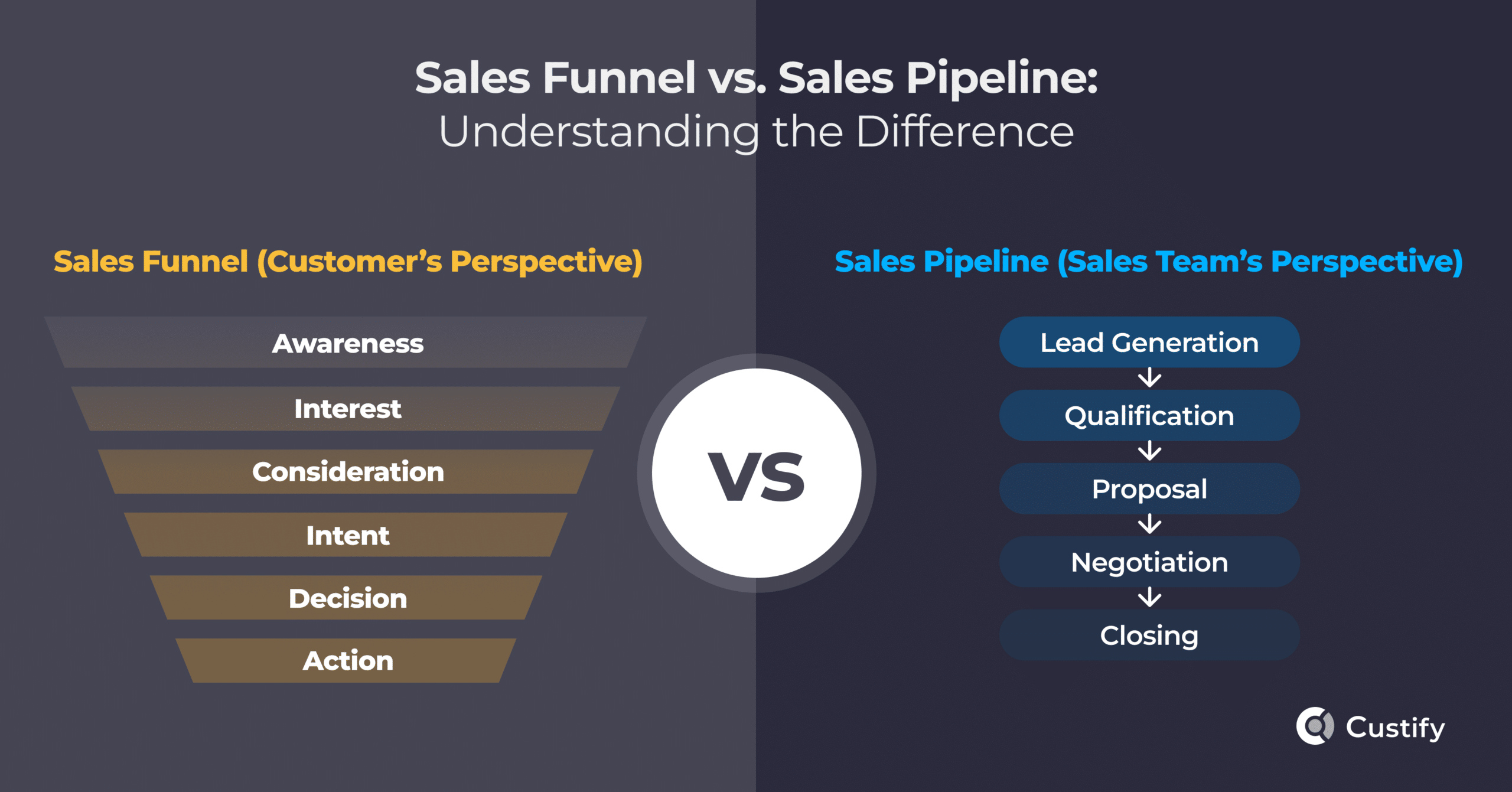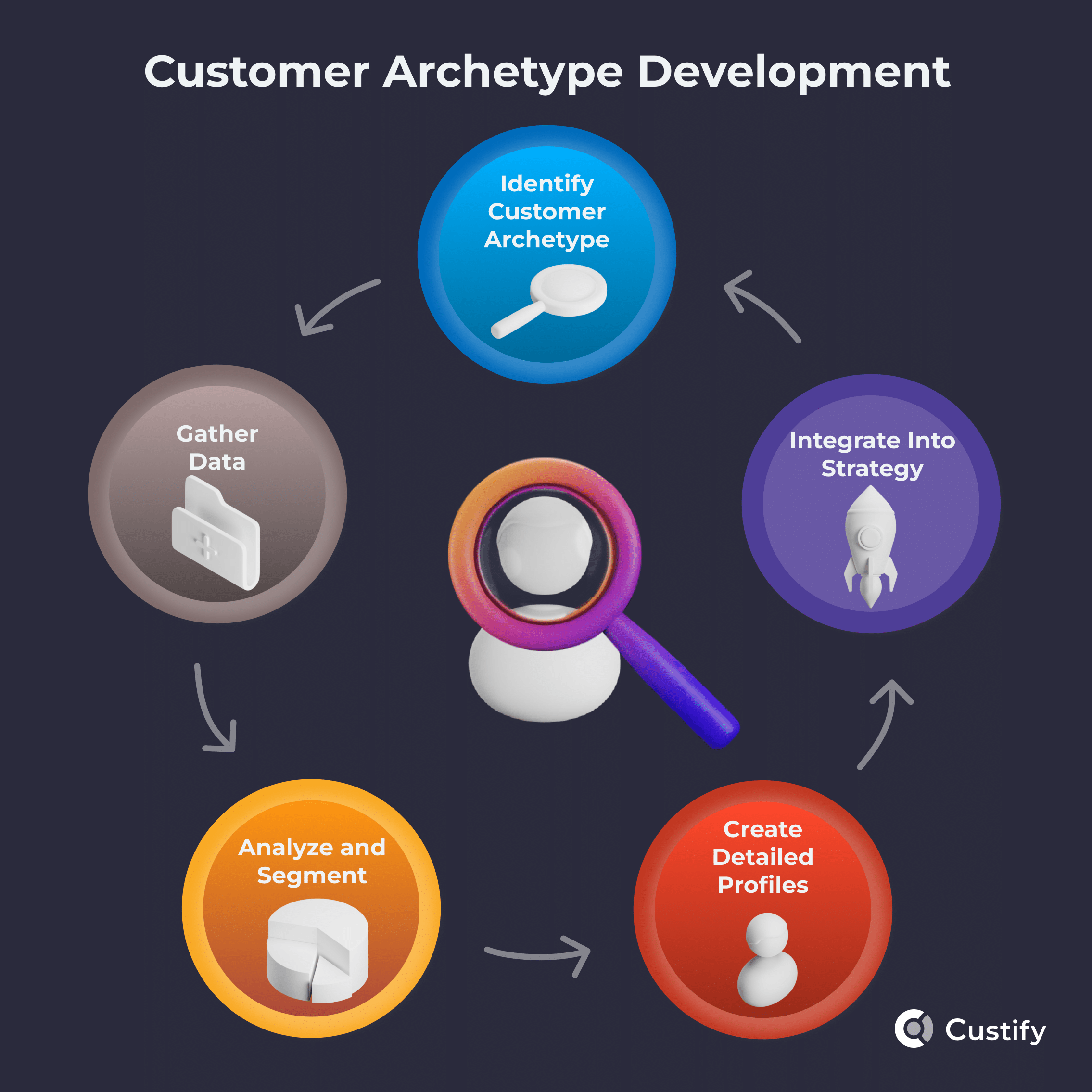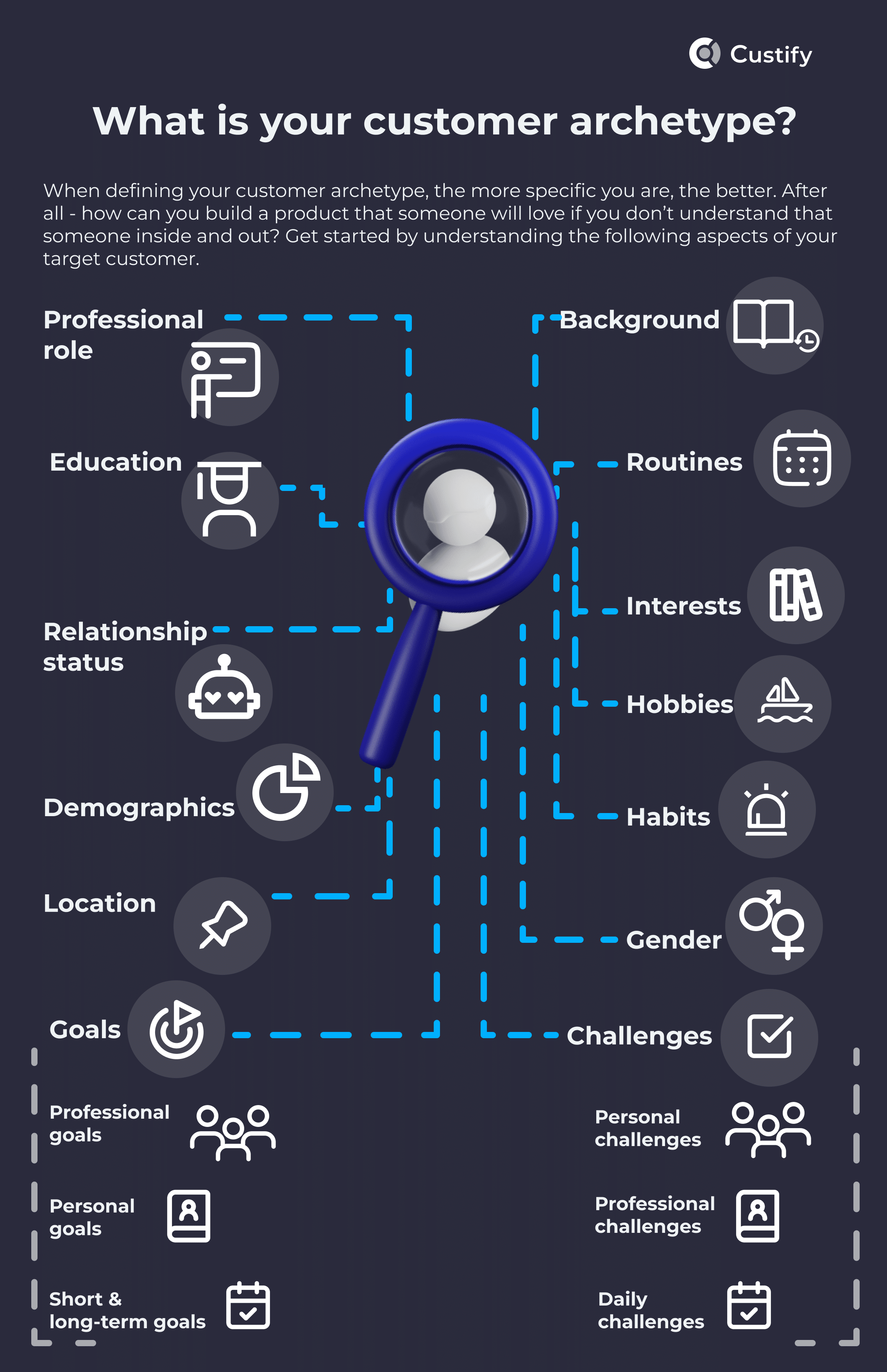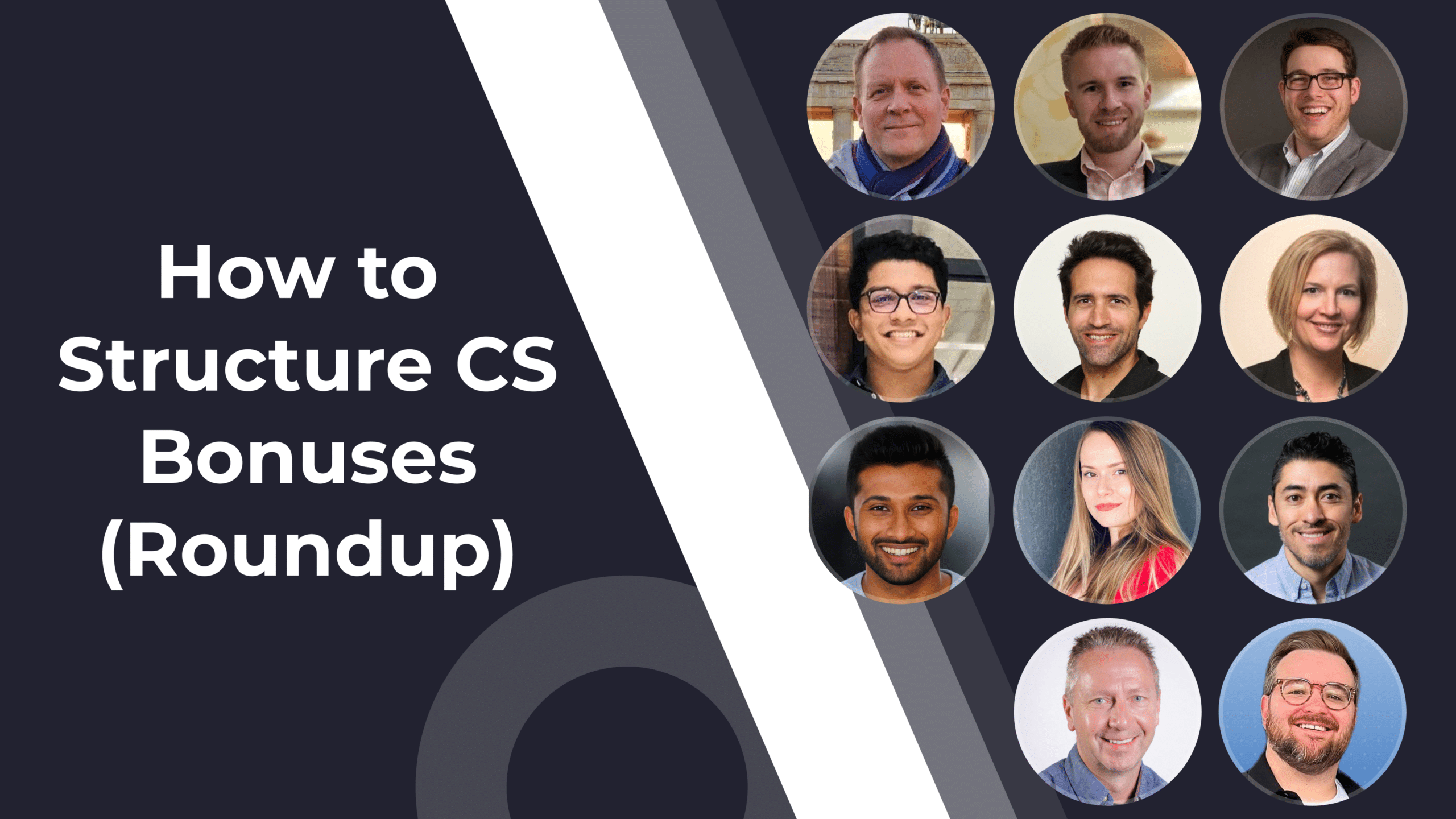An effective sales funnel can make or break your business. But did you know that, according to Salesforce, 68% of companies have not yet identified, designed, or measured their sales funnel. An effective sales funnel is key for any business. To get potential buyers into your pipeline, you need to catch and hold their attention.
Of course, this is easier said than done. That’s why businesses use the power of customer archetypes to craft messages that resonate with their audience on a more emotional level.
Unlike buyer personas, which are focused on specific customer data, customer archetypes are based on broader psychological themes that get to the heart of people’s desires.
Let’s look at how they enhance marketing efforts and sales funnel effectiveness.
What are customer archetypes?
Whether you’re a SaaS provider offering business capability modeling software or a restaurant owner offering a fine dining experience, you need to understand your target market. That’s where customer archetypes come into play.
But wait, what’s the difference between customer archetypes and buyer personas?
Buyer personas are created using market research and real customer data. Marketers analyze this data to create customer profiles based on their specific demographic information and behavior patterns.
Customer archetypes try to dig deeper than this by looking at baseline human psychological drivers and characteristics. Your product or service will likely appeal to people for various reasons and motivations. But it’s only by sorting your clientele into groups based on shared lifestyle and personality traits that you can unlock their drivers and create a compelling message.
For example, let’s say you sell computers. In theory, your customer archetypes might be:
- The Everyman: The Everyman seeks functionality and value. They need computers that are affordable, durable, and user-friendly, supporting everyday tasks like browsing the web, using social media, and basic office applications.
- The Professional: Uses computers for work. The Professional prioritizes reliable, secure, and powerful computers that can keep up with demanding business applications and workloads.
- The Ruler: This archetype sees technology as a status symbol. They are likely to purchase high-end, premium computers that signify success and leadership. The Ruler values sophisticated design along with top-tier performance.
- The Family Head: The Family Head might be someone who purchases computers for others, such as buying devices for children’s education or for elderly parents to stay connected. Computers that are simple to use and offer good customer support appeal to this archetype.
As you can see, these categories look at the wider context of a customer’s life, their motivations, and how computers fit into it.
Customer archetypes dig deeper than buyer personas, tapping into the fundamental motivations behind customer behavior. When applied to your sales funnel, these archetypes help craft more resonant messages at every stage—from initial awareness campaigns to conversion tactics. For example, if you’re marketing to “The Professional,” content focused on security and reliability will outperform more generic messaging.
Sales funnels vs. sales pipelines
You’ve probably seen the terms funnel and pipeline thrown around pretty interchangeably online. It’s important to note, however, that there is a formal distinction.
- Sales pipeline: A sales pipeline is based on the perspective of your sales team. It starts with the identification of leads and follows them as they move through each part of your sales process towards a conversion.
- Sales funnel: Although used in a similar way, sales funnels focus on the buyer’s perspective. It starts with potential customers becoming aware of your brand and building interest. Then they evaluate their options, and, finally, decide whether or not to purchase.

While sales pipelines focus on the seller’s perspective, sales funnels are all about the buyer’s journey. By identifying customer archetypes, you can tailor your approach in both systems—ensuring your messaging resonates at every stage of the funnel and every step of the pipeline.
The role of sales funnels in customer success
Sales funnels don’t just convert leads—they build the foundation for long-term customer success. By understanding your customers’ archetypes, you can anticipate their needs and create proactive solutions, from personalized onboarding processes to targeted content that resolves pain points early.
For example, knowing the kinds of problems people experience with products like yours. With that knowledge, you can increase awareness by marketing around resolving those issues.
This is why customer archetypes can help with customer success. It empowers you to improve customer relationships and find a way to reach their desired outcomes while managing potential obstacles.

The better you understand a customer and how they move through your sales funnel, the better equipped your sales and customer services teams to guide them through the process.
How Customer Archetypes Benefit Your Sales Funnel
Nice’s CX 2024 trends report found that 57% of customers feel experiences have gotten worse in the last year. That’s why you need to take steps to improve your sales funnel.
Fortunately, implementing customer archetypes can help you achieve this by segmenting each group and tailoring their experience.
How? Let’s take another look at the example of the Everyman computer customer archetype from earlier. Using this archetype, you would improve the customer journey through the sales funnel by doing the following:
- Awareness stage: Use straightforward, relatable advertising on social media or television that emphasizes the value and ease of use.
- Interest stage: Provide clear, jargon-free explanations of product features and direct comparisons with other market options.
- Decision stage: Highlight customer reviews and ratings that reflect satisfaction and reliability.
- Action: Offer straightforward purchasing options, like easy payment plans or strong after-sales support.

This is how TrackMaven explains the funnel. There are other representations too, but this is representative of most of them.
You can adjust a customer’s journey to match the fundamental desires and values of an archetype to make the marketing and sales process more resonant and effective. In doing so, you not only improve customer satisfaction but also enhance conversion rates across the sales funnel.
Studies show personalizing your content can increase the overall effectiveness of the sales funnel by up to 20%. By applying archetypes to every stage—whether it’s relatable ads for the Everyman or decision-making guides for The Professional—you can create a funnel experience that speaks directly to customer motivations.
Effective targeted marketing
By understanding the differences between archetypes, you can tap into new markets with precision.
A great example is Netflix, which has expanded its customer base by catering content to multiple archetypes—whether it’s “The Trendsetter” seeking new series or “The Family” looking for family-friendly options. Looking at such targeted advertising examples can also help you see how brands tailor messages to distinct archetypes and refine their outreach with greater accuracy. Setting KPIs based on archetype behaviors ensures you’re meeting the right goals at every stage of market expansion.
So, let’s say your business’s main product is a SaaS enterprise architecture tool. Your existing clientele might be effectively represented by Oscar the Office Administrator.
Oscar wants a user-friendly computer network that is usable to even the least tech-savvy employee. He wants file-sharing to be quick and easy for collaboration, not to mention minimal turnaround time.
Now, let’s say you wanted to expand into the finance sector. Due to the highly sensitive nature of finance data, your second customer archetype is Deborah the Data Protector.
To create an effective ad campaign focused on your new customer archetype, you would take the following steps:
- Define Deborah the Data Protector: Identify and define the key characteristics of your new target customer archetype. This includes demographics, psychographics, needs, preferences, and typical behaviors.
- Craft the Core Message: Based on your identified customer archetype, create a message that will resonate deeply with them. For example, here, maybe you’ll want to place an emphasis on network security, data encryption, and multi-level access.
- Choose the Right Channel: Consider what is the best way to reach Deborah the Data Protector. As Deborah is likely a busy professional, here you would want to consider email or LinkedIn.
- Personalize the Engagement: Finally, where possible, use data to personalize your message by using the recipient’s name, referencing recent industry events, and so on.
These steps can then be replicated depending on your customer archetype. You can adjust your demos and sales talking points to emphasize new priorities. You can even implement new calls to action to appeal to the new market.
Here’s a circular flow chart illustrating the process of implementing customer archetypes in marketing strategies. It visually represents the key stages:

The flowchart displays a continuous cycle of these steps, helping to visually map the customer archetype process. This graphic would add significant value to your article by visually reinforcing the stages you’re explaining.
Broaden your reach
Don’t be so aggressive in your pursuit of a new customer segment that you abandon your old one.
You can’t exactly build a customer-centric organization if you make whole sections of your market feel like you’ve abandoned them. That’s why it can help to have separate teams for each distinct demographic.
The precursor to personalization
When it comes to modern sales and marketing, personalization is all the rage. Consumers love the idea of curated content. For one thing, it makes them feel seen. It also removes a lot of the guesswork of sifting through posts and products. Especially when they can quickly check a list of bespoke recommendations.
Of course, getting to the stage of being able to personalize effectively isn’t easy. Customer archetypes are an important stepping stone. They help break down the churning mass of customers into easily understandable sections.
As customer archetypes take a holistic perspective, they’re also a great tool for understanding how you can personalize different stages of the sales funnel.
For example, if you’re targeting The Family Head archetype from earlier, you can start by creating family-orientated social media content at the beginning of the funnel, and you can send custom offers, such as family and friends discounts, at the end of the funnel.
Customer archetypes serve as a foundation for deeper personalization. With tools like CRMs and advanced segmentation, companies can now deliver personalized content and offers at scale—ensuring that both new and existing customers feel seen and valued throughout their journey.
To take things even further, you can implement a buyer persona. More on that in the next section.
How to build accurate customer archetypes
Now we’ve established what customer archetypes are and how they work. Next, let’s finish with some practical advice on how to develop them. With focus tools like these, you get out what you put in. The more data you have on a given customer segment, the more effective your archetype will be.

1. Collect customer and user data
The first step to customer segmentation is data collection. You need as much information about your customers (and their users, if applicable) as possible. For example:
- Demographic data, such as age, gender, education level, or geographic location,
- Behavioral data, like purchase histories or most-used social media.
- Sentiment data, such as personality traits, preferences, and consumer priorities.
Depending on your industry, you can use surveys, CMS systems, and customer feedback tools to collect this data. You’ll want to select a tool that works for you. For example, a SaaS company might want to rely more heavily on email surveys, whereas an online retailer might have better results by adding a short customer feedback form to their order confirmation page.
Whichever way you decide to collect your data, this mass of information will contain trends, commonalities, and correlations. These can make the bones of some basic customer archetypes. For example, TikTok was the most popular social media platform in 2024. This makes it the ideal place to spread brand awareness with a young customer archetype.

Source: Infographic from HubSpot
To build accurate customer archetypes, leverage tools like HubSpot, Custify or Salesforce to gather demographic and behavioral data. Collaborating across teams (marketing, sales, and product) will ensure a holistic view of your customers and help you create archetypes that guide your entire funnel strategy.
2. Establish key market segments
Marketing to specific segments is a far more effective way of funneling leads than marketing to the lowest common denominator. In fact, research from HubSpot shows that segmented email marketing drives 30% more opens and 50% more click-throughs than unsegmented emails.
So, it’s time to evaluate the market segments most relevant to your business. For example, a clothes seller might get most of their business from children and teens. They might get more business from men than women, or vice versa.
Beyond this, you’ll want to segment your customers according to their buying behavior, product usage, and lifestyle values, such as being eco-conscious and technological preferences. This will allow you to develop the right message at the right time and in the right place.
Understanding your market segments lays the foundation for more developed customer archetypes. Of course, you need to move beyond basic demographic info and inform your archetypes with behavioral insights.
3. Generate detailed customer archetypes
A completely finished customer archetype should be concise and evocative. First, however, you need all the information on the table.
Let’s say your web service’s most prominent market segment is men and women aged 18-34. They’re most active online in the evenings on weekdays and more evenly across the weekend. Although you have some people actively creating content, most of your users just view it.
We could keep going. But, once you have analyzed all of your qualitative and quantitative data, the next step is to build up a concise picture of your customer and their needs. The resulting customer archetype might look like this:
The Weekend Scroller: A Weekend Scroller most likely works a typical 9-5. They use the service as a way to unwind from their work. That means they spend most of their time viewing content and appreciate ease of use.
4. Create buyer personas
Customer archetypes are useful for an all-rounded understanding of the people you deal with. On the other hand, buyer personas (or customer personas) are more specific. They’re a more detailed way of using data to improve customer relationships.
While an archetype might look at a group’s desires and motivations, a buyer persona will look at your specific customer and their habits.
For example, a buyer persona may include a person’s approximate salary based on the information they’ve provided you with. It also lists relevant behavioral information, like their pain points, purchasing habits, and reasons for engaging with your brand.
5. Take market behavior changes into account
Customer archetypes and buyer personas are very useful. However, it’s important to update them with the times. Consumer sensibilities change as new generations enter the marketplace. People become more conscientious of specific issues, like green and sustainable business practices.
It’s important to review customer archetypes against recent developments regularly, then revise them as necessary. This means you need to refine your archetypes by continuing to collect and analyze new customer data.
On top of this, you should periodically update your data collection methods to ensure that you’re accurately characterizing your audience.
For example, an ecommerce store might gain most of its demographic data through its loyalty scheme. However, over time, this may become inaccurate as loyalty sign-ups are dominated by students hoping to save money. In this case, they may want to begin analyzing other data points, such as post-purchase questionnaires, to provide a more holistic understanding.
As you can see, how you continue to collect and analyze your data will depend on your product and, of course, customers. However, the key is to reflect on your entire process so that you are able to grow and change with your customers.
Customer archetypes boost sales funnel effectiveness
Using customer archetypes makes your sales funnel more effective, providing a focal point for your sales and marketing efforts. They can be great for boosting customer engagement, increasing conversions, and helping you to consider your customer’s lives as a whole.
They represent an effective midpoint between a one-size-fits-all approach and micro-level personalization. Using data-driven insights makes your archetypes that much more accurate, allowing you to determine the best ways to support customers at every stage of your sales funnel.
Ultimately, this is a win-win, so start crafting your own archetypes and see the impact they can have.




